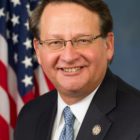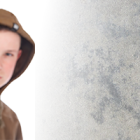
Washington ‘State-raised’ Inmates From Foster Care Urge Better Youth Support
|
Inevitable. That’s how winding up in prison felt for a group of former foster youth — now adults who are imprisoned at Monroe Correctional Complex in Washington state.
Juvenile Justice Information Exchange (https://jjie.org/tag/dual-status/)

Inevitable. That’s how winding up in prison felt for a group of former foster youth — now adults who are imprisoned at Monroe Correctional Complex in Washington state.
“Building a Brighter Future for Youth with Dual Status: A Policy Roadmap Forward,” from the RFK National Resource Center for Juvenile Justice, looks at dual-status youth and policy recommendations for furthering their success. The policy recommendations come in three categories: cross-system collaboration, trauma-informed approaches, and technology and innovation improvements. They can be implemented at the federal, state and local levels.

While immersed in child protection work, it never occurred to me that preventing delinquency was also a part of my job.
When I paused to listen to the stories of young adults who were charged as youth, I realized how doors to graduation, employment and stable housing were shut for them because of decisions they made as a child. When I read the research on trauma and understood how it manifests in delinquent behaviors, and how juvenile justice involvement can exacerbate the trauma, I recognized the harm that can be done within that system.

It is now well-known that youth who come into contact with the juvenile justice system have high rates of mental health and substance abuse conditions — rates that far exceed those of the general youth population.

A proposed federal grant program aims to encourage cooperation between states’ juvenile justice and child welfare agencies, to help youth who encounter both systems.

National reform efforts to support dual status youth have focused primarily on improving collaboration between the child welfare and juvenile justice systems. While this is a crucial first step, education systems must be incorporated as a central partner if we are to significantly improve opportunities for this population.

DeAngelo Cortijo remembers the fear he felt as a young boy on the day his mother was lifted unconscious into an ambulance. He thought he would never see her again.

Careful data analysis might be able to keep youth out of the juvenile justice system, a pilot study shows. Officials in Los Angeles County used a screening assessment developed by the National Council on Crime & Delinquency to identify young people in the child welfare system and direct them into prevention services.